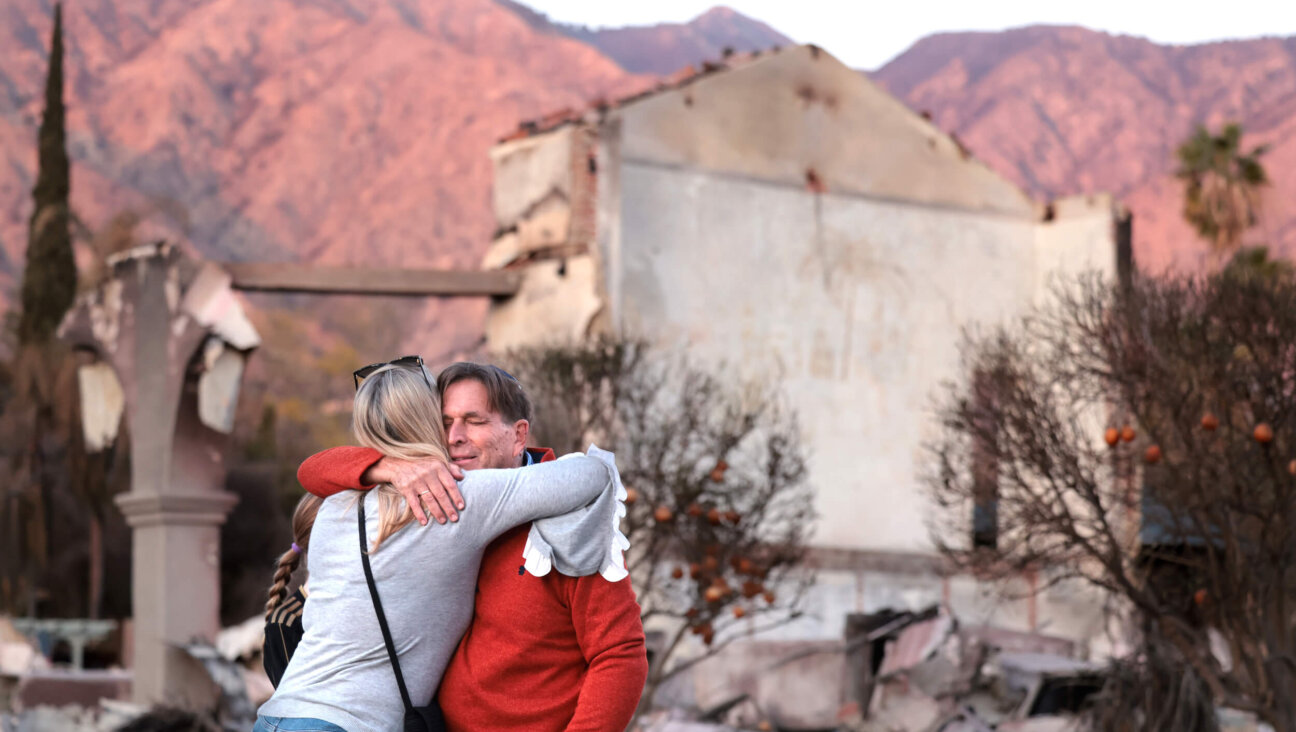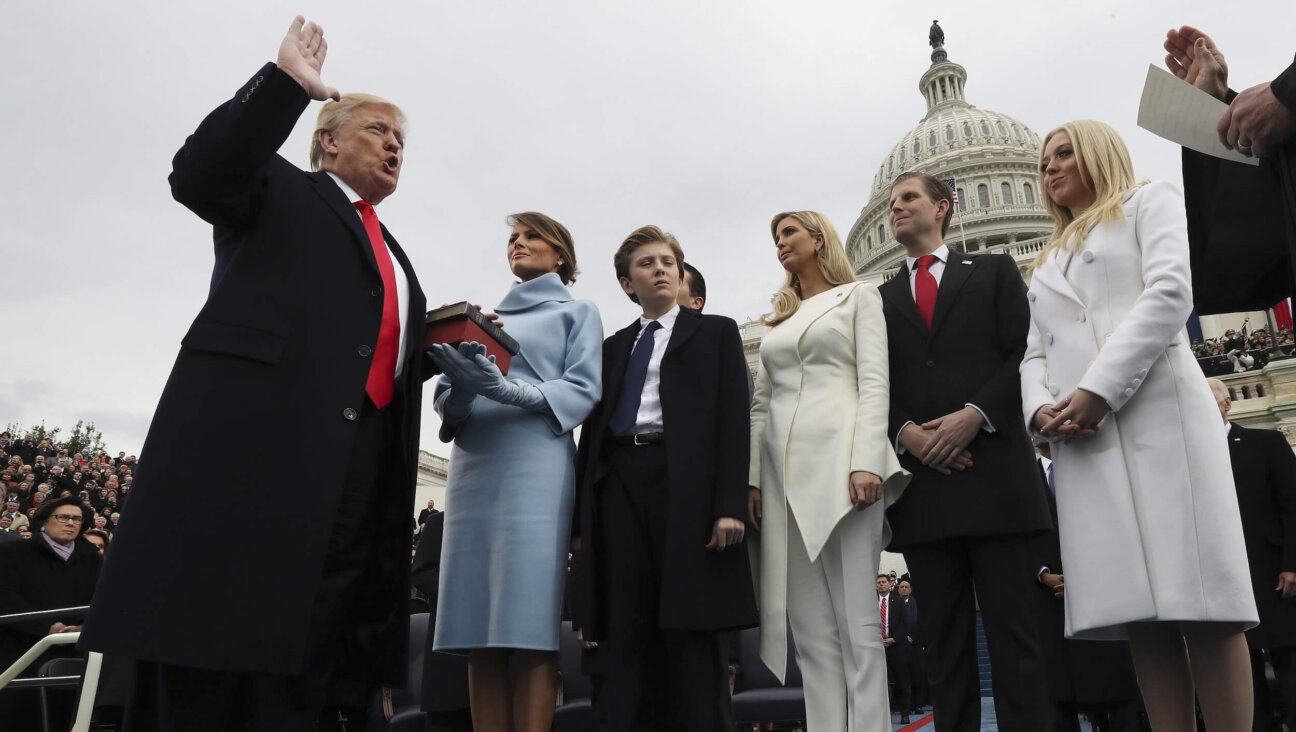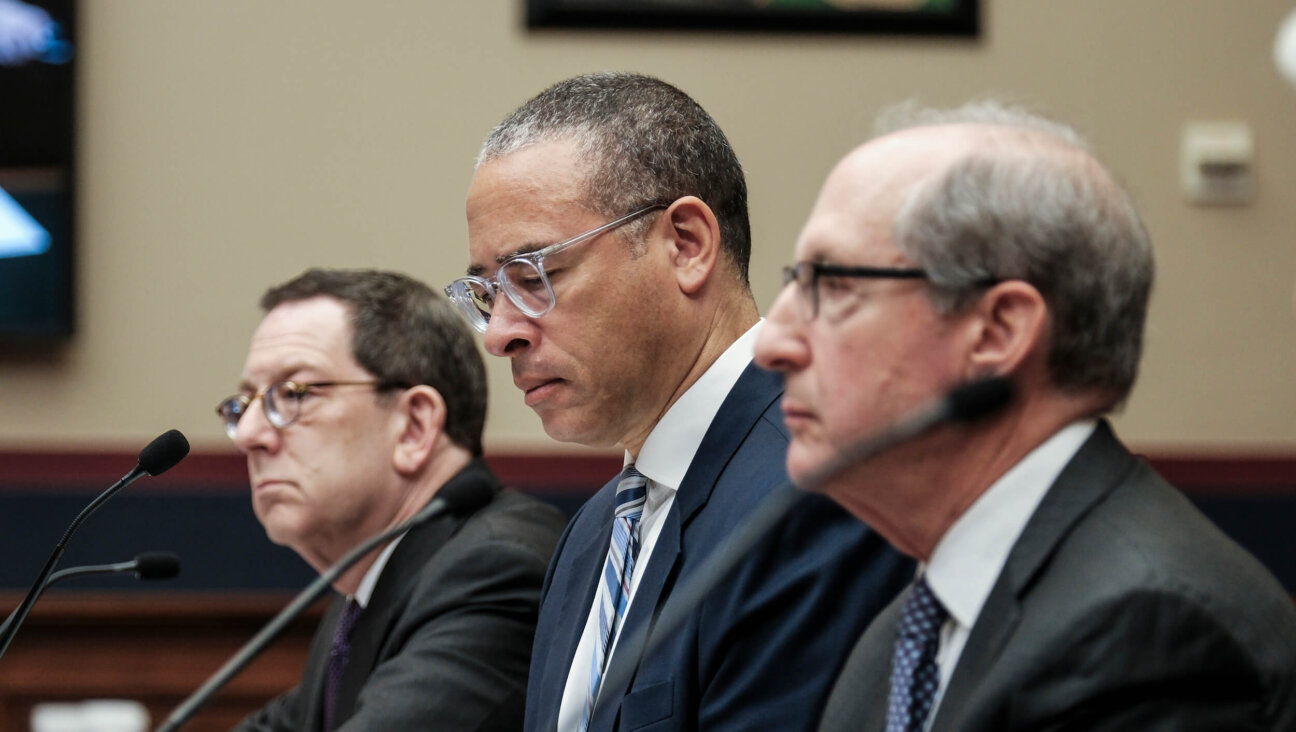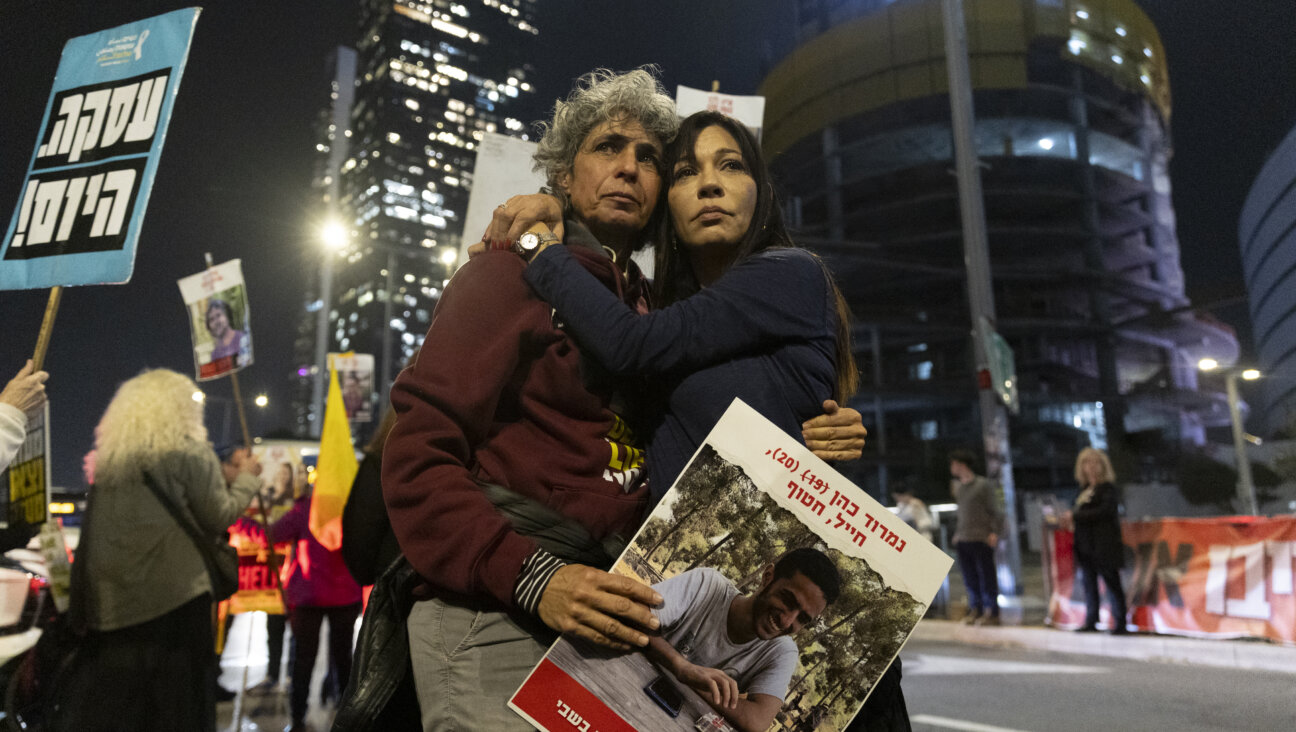When ‘Unity’ Means Unity of the Orthodox

Happy Moment: Orthodox young men celebrate the Daf Yomi at a packed New Jersey stadium. They heard calls for unity of Jews, but what they really meant was unity of the Orthodox. Image by ezra glinter
“Achdus Klal Yisroel.”
At the recent Siyum HaShas, celebrating the completion of the 7-and-half-year Daf Yomi (page-a-day) Talmud regimen, that phrase — “unity of the Jewish people” — resounded like a mantra. At the ceremony, which took place at the MetLife stadium in East Rutherford, N.J., the idea of unity was affirmed by nearly every speaker. It appeared often in the 209-page event program (and the 83-page children’s program), and was featured again in the laudatory coverage in the Orthodox press. “The promise and premise of the Daf Yomi is achdus Klal Yisroel,” said the evening’s first speaker, Elly Kleinman, in his introductory remarks. “Ashkenazim, Sephardim, Modern Orthodox, Yeshivish, Hasidim and thousands of ba’alei teshuva [masters of repentance].”
Unity was not the only theme of the evening — the revival of Orthodoxy after the Holocaust and dedication to Torah study were also stressed — but it was the main emphasis. The event in New Jersey, which was only one of many celebrations around the world, packed the football field with about 90,000 Jews from nearly every branch of Orthodoxy. Groups from religious strongholds like Lakewood and Passaic were bused in, along with teenagers from nearby summer camps. The crowd filled each section of the stadium and spilled out onto concourses, escalators and parking lots. Standing in the middle of the field, which was covered to provide floor-level seating, one could see a complete panorama of black hats and jackets rising level upon level on all sides. Billed as the largest such gathering in history, the Siyum HaShas was a coming together of impressive proportions.
But as my colleague Paul Berger put it last week in these pages, a message of unity begs the question: Unity for whom? Articles such as his, and others in the non-Orthodox press, highlighted the fact that participation by women and non-Orthodox Jewish groups in the study of Daf Yomi was not recognized by the representative body of the ultra-Orthodox world, Agudath Israel, which sponsored the mega Siyum HaShas event. As Berger reported, those wanting a more inclusive siyum had to seek out other, non-Agudah celebrations. How could the Agudah gathering call itself unifying when it was also clearly exclusive?
The question is important, and easily answered. For the Orthodox, achdus Klal Yisroel means unity of the Orthodox. In this, the Siyum HaShas was remarkably successful. Though the crowd leaned toward the non-Hasidic ultra-Orthodox population that constitutes the base of Agudath Israel, attendees came from nearly every stream of Orthodoxy. As for non-Orthodox groups, if they were present they were not apparent, and they were certainly not mentioned.
This failure to take into account the existence of non-Orthodox Jews is troubling but not surprising. There is a real divide between Orthodox Jewry and more liberal movements, and it goes against the ideological foundations of Orthodoxy to acknowledge the legitimacy of those groups. Klal Yisroel, as they see it, is not the Jewish population as it exists, but an idealized Orthodox community whose continuity goes back to the Bible. Other manifestations of Judaism are not, in this view, genuine expressions of Judaism.
That’s why Orthodox outreach to non-Orthodox Jews, particularly when it is premised on Jewish unity, is so patronizing. For the Agudah to boast of “Jewish unity” in this context is an insult to others disguised as a compliment to themselves. They praise their own cohesiveness while excluding us from it, and expect congratulations.
Yet we of the non-Orthodox camps (and here I’ll raise the flag of the secular, cultural Jew) would be wise to look inward, as well. Among my Jewish friends and colleagues, we are more likely to talk about the “Jewish community” than about “Klal Yisroel.” In that formulation it is the Orthodox — and especially the ultra-Orthodox — who constitute the Jewish “other.” Just as they exclude us, there is a corresponding alienation of our own toward them, whom we treat with fascination, repulsion and bewilderment. We may be acquainted with Matisyahu’s latest psychodrama, or even with Lipa Schmeltzer, but the rabbis and roshei yeshiva, academic heads, who set the pace of Orthodoxy are to us virtually unknown. The kind of Judaism on display at the Siyum HaShas is thought of as the fundamentalist fringe, and there is a sense that we (mainstream American Jews) and they (black-clad fanatics) are not of the same tribe. When it comes to being Jewish, we occupy mutually exclusive paradigms.
Recently this sense of estrangement has been changing, from casual dismissal to a deeper anxiety. Mass gatherings of ultra-Orthodox Jews, like the anti-Internet gathering at Citi Field in May, and the Siyum HaShas in August, have provided visible demonstrations of Orthodox numbers and made those communities of greater interest to the mainstream media. More important, the recent Jewish population survey conducted by UJA Federation of New York put those events in the context of a larger demographic realignment that will make the ultra-Orthodox less and less the exception to the American Jewish rule. We are being forced to redefine what constitutes the mainstream, and the longer we treat the ultra-Orthodox as a fringe element, the more we are, in our own way, clinging to an illusion at the expense of reality.
We need to contend with this problem rather than avoid it. We need not ape Orthodox practice — when it comes to Jewish learning, I would rather read Yiddish literature than the rabbinic arcana of the Talmud — but we need to be familiar with it. Orthodoxy may not be the only strain of Judaism, and it may not have the authenticity it pretends to possess, but it is Judaism nonetheless, even (maybe especially) in its illiberal aspects. If we care about Judaism, Jewish culture or the Jewish people, we need to reject ultra-Orthodox exclusionism as well as also our own estrangement from it. We should acquaint ourselves with the Orthodox ethos rather than be alienated by it. Jewish unity does not mean that we agree on all points or even share the same values. But it does require that we possess the wherewithal to argue intelligently and to speak across to each other, rather than down. It does require, in a broad sense, that we be “on the same page.”
Ezra Glinter is the deputy arts editor of the Forward.
A message from our Publisher & CEO Rachel Fishman Feddersen

I hope you appreciated this article. Before you go, I’d like to ask you to please support the Forward’s award-winning, nonprofit journalism so that we can be prepared for whatever news 2025 brings.
At a time when other newsrooms are closing or cutting back, the Forward has removed its paywall and invested additional resources to report on the ground from Israel and around the U.S. on the impact of the war, rising antisemitism and polarized discourse.
Readers like you make it all possible. Support our work by becoming a Forward Member and connect with our journalism and your community.
— Rachel Fishman Feddersen, Publisher and CEO






























